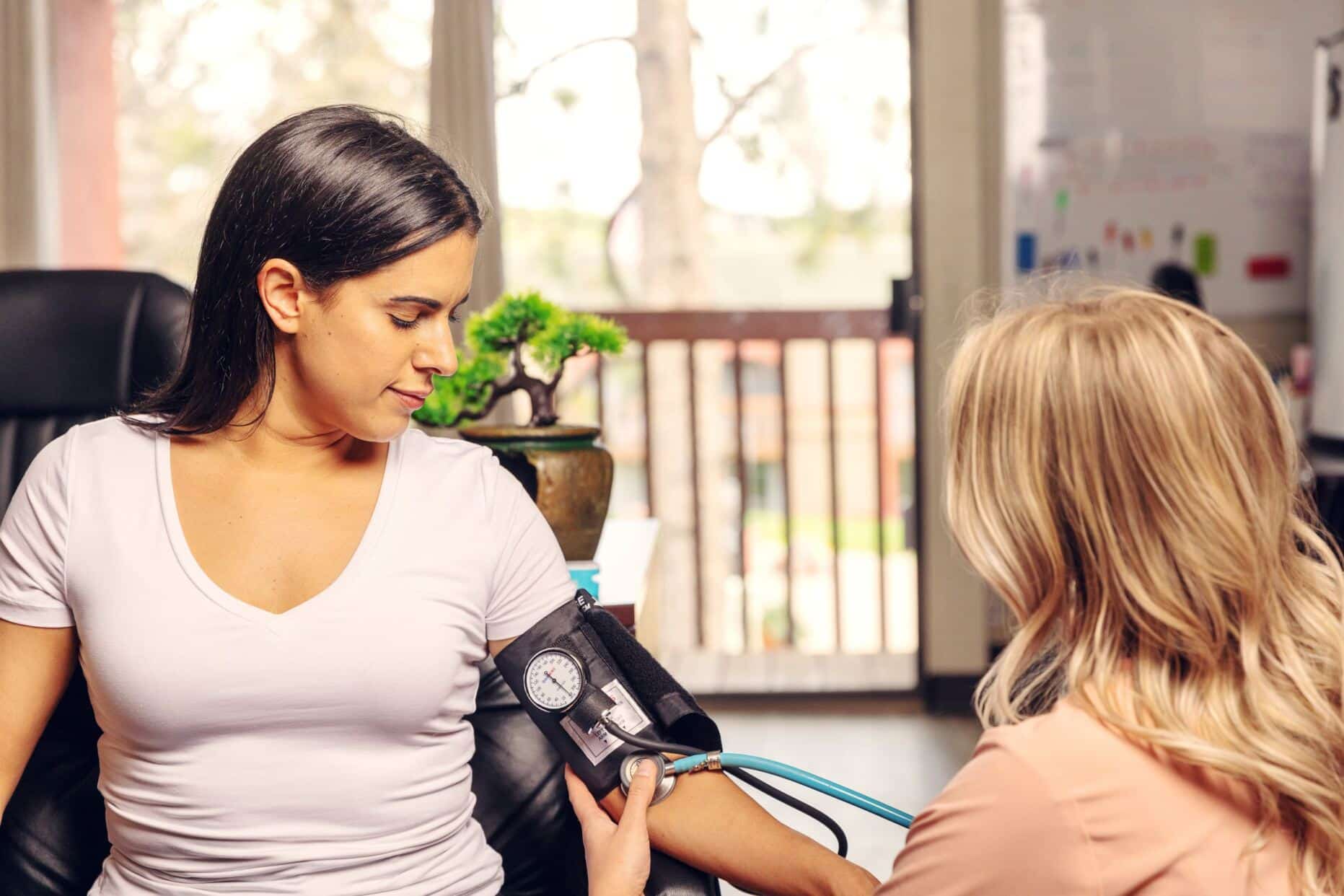One of the newest and least-known treatments for substance use disorder is the Matrix Model, devised in the 1980s by the nonprofit Matrix Institute on Addictions. Although it was specifically created to deal with the then-scourge of stimulant addiction — especially cocaine — it has since been adapted for other types of addiction, including the current opioid epidemic.
The reason that Matrix Model substance use disorder treatment for cocaine was thought to be needed was that, at the time, addiction treatment focused on heroin. Alcohol wasn’t thought of as a drug, and alcohol abuse was thought of as a social problem, not an addiction. Alcoholics Anonymous was thought to be sufficient to deal with it.
Cocaine wasn’t seen as much of a problem, either. It was regarded as a recreational drug more than a drug of addiction. It was illegal, and it could cause physical or mental problems, but even users seemed to use it occasionally. In the 1980s, the crack epidemic changed that perception.
Once cocaine was seen as a problem, the lack of specialized treatment became another problem. There were also no medication-assisted treatments available for stimulant addiction.
Opioid overdoses can be reversed with naloxone (Narcan), Heroin can be reversed with methadone, later with buprenorphine (Suboxone) and naltrexone (Vivitrol). No similar overdose antidotes existed for a lot of other drug addictions including attention deficit hyperactivity disorder (ADHD) drug addiction sometimes known as study drugs.
What Is The Matrix Model?
Matrix Model substance use disorder treatment is an intensive therapy that combines elements of several different therapies. This is one of its benefits, because it promotes an idea that is now almost universally accepted about substance use disorder: no one treatment works for everybody, and almost everybody benefits from a combination of treatments.
At its core, the Matrix Model addiction treatment depends upon the therapist who is also a teacher. In the Matrix Model, the therapist leads and guides but does not proclaim, does not dictate. It’s meant to be a collaborative relationship between the therapist and the client.
Just as important is the relationship between the individual client and the group of clients, who meet more often than the client does one-on-one with the therapist.
The Matrix Model integrates:
- 12-step facilitation. Encouraging individuals to follow the peer support model of Alcoholics Anonymous and Narcotics Anonymous.
- Individual and group psychotherapy. One-on-one sessions with a psychiatrist and with several other people with substance use disorders.
- Cognitive behavioral therapy (CBT). A type of psychotherapy designed to change the way clients think about and cope with problems.
- Motivational interviewing or motivational enhancement therapy. A type of psychotherapy that focuses on why people want to change their behaviors, resolve mixed feelings they have, and help them develop healthier habits through nonjudgmental acceptance.
- Contingency management. Vouchers, cash, prizes, or other rewards for not using drugs, alcohol, or other substances.
- Drug tests. To ensure abstinence, urinalysis and other testing are conducted regularly.
- Couples or family therapy and social support. Spouses, family, and friends become involved so they don’t sabotage rehab treatment and offer a true safety net.
- Drug education. Teaching clients and their families about the dangers of continued substance use disorder.
It was also designed to be an intensive outpatient therapy, meaning that clients attend therapy during the day but then go home at night. The Matrix Model program has also been adapted to include residential inpatient therapy. Back in the ‘80s, many rehab therapies were once a week.
Currently, the usual maximum for most treatment plans is three months/90 days and some only last four weeks. The Matrix treatment plan is meant to last at least four months and may continue for as long as a year if necessary. Talk to a Intake Coordinator
Take The First Step Towards Recovery
The Matrix Model – Stages of Recovery
There are several stages of recovery in the Matrix Model curriculum.
Withdrawal (Days 1-15)
Withdrawal is the process the body and brain undergo when drug use stops. It can be painful, disorienting, and occasionally life-threatening. It is the drug’s way of making people with substance use disorders continue their drug use after it has become a problem for their health, finances, and relationships.
The first symptom experienced during withdrawal is a crash. Cocaine and other stimulants make users feel energized, alert.
When use stops, they become tired, sleepy, or have trouble sleeping. They may feel drained, maybe depressed. They may become paranoid.
Above all, they crave the drug. They might try to cope by using another substance such as alcohol or marijuana.
The danger is they may relapse, especially if they encounter triggers: people with whom they used drugs or a location where they used to buy or use drugs. This danger may extend into the second stage.
This is the most intensive part of the Matrix Model. Clients are expected to attend:
- Early recovery skills group. Small groups in which each client receives as much attention as possible, focusing on teaching them the cognitive skills to resist cravings, making individual schedules to manage their time, and encouraging them to access community support services.
- Relapse prevention groups. Relapse prevention is probably the most important skill taught in rehab because relapse is always a danger, whether it’s the first week of sobriety or the 1,000th week. Sessions are structured around more than 30 topics and utilize the cognitive-behavioral principles needed for recovery.
- Family education group or sessions. Recovery is far easier and more likely when there is social support. Since many addicts also have friends who are addicts and not likely to help them become and stay clean, social support from family may be safer. It’s better still if family members can attend sessions with the client and learn how to be supportive but not enabling. Meetings include videos, slideshows, and expert panel presentations on addiction, its biological causes, mental effects, and impact on the family.
- 12-step group. At least two 12-step meetings, plus weekend spiritual meetings and other recovery activities.
These groups are required beyond the withdrawal period into the honeymoon period, at least for the first 28 days.
Honeymoon (Days 16-45) or Early Abstinence
The physical symptoms of withdrawal usually subside or become manageable during the first phase, but the psychological symptoms such as cravings likely will continue into early abstinence.
There may be a temptation to consider their cocaine use as over and that things can return to normal. People may become overconfident in their abstinence and want to stop participating in the Matrix Model process or resume some behaviors that contributed to or allowed their drug use.
Lingering symptoms from cocaine cessation may put them at risk for relapse without the Matrix Model structure.
Beginning about day 36, the Matrix Model schedule lightens up. There is less emphasis on attending early recovery education, fewer 12-step meetings are required, and family education can be replaced with other types of social support if the clients prefer. This lighter schedule continues into the next phase.
The Wall (Days 46-120) or Protracted Abstinence
In any major behavioral change, such as substance use rehab, an exercise routine, or a diet, people can hit a wall where they no longer see the benefits and feel the deprivations.
They may fear that the lingering symptoms — feeling tired during the day yet having trouble sleeping at night, a lack of energy and focus — won’t go away and wonder whether they were better off on drugs. They feel apathetic about everything, or feel that no one knows what they are going through or cares.
By the time this phase ends, all that remains of the active Matrix Model structure is social support and 12-step meetings, both of which should continue at least through the first year of recovery.
Readjustment (Days 121-End)
Sometimes this stage is broken into two parts: Adjustment (through day 180) and Resolution (day 181 onward). Both are periods of aftercare. Instruction and structure are over, now it’s all down to maintenance. Officially, this stage or stages end after one year, but unofficially, this is a lifelong process.
Addiction or substance use disorder is never cured per se. Once addicted, there is always a risk of relapse. Actor Philip Seymour Hoffman was sober for more than two decades before he relapsed. Even though he checked himself back into rehab, he was dead from an overdose less than a year later.
Triggers for relapse at later stages can include overconfidence, job dissatisfaction or relationship troubles, guilt, anger at oneself or others, or as trivial a reason as boredom.
The Strengths and Weaknesses of the Matrix Model
The strengths of the Matrix Model include its comprehensive nature, its success rate, and that there is a manual — available free — that allows all trained addiction specialists to follow its precepts.
Its weaknesses include that it is a rigid program that requires specialists trained in it. It is also narrowly focused on addiction, but addiction is frequently accompanied by a co-occurring mental health issue — such as depression, anxiety, or schizophrenia — that requires separate treatment. The Matrix Model may not accommodate such needed co-occurring therapies.
No rehab method is perfect for everyone by itself, not even one as inclusive as the Matrix Model.
Sources
Medical disclaimer:
Sunshine Behavioral Health strives to help people who are facing substance abuse, addiction, mental health disorders, or a combination of these conditions. It does this by providing compassionate care and evidence-based content that addresses health, treatment, and recovery.
Licensed medical professionals review material we publish on our site. The material is not a substitute for qualified medical diagnoses, treatment, or advice. It should not be used to replace the suggestions of your personal physician or other health care professionals.







